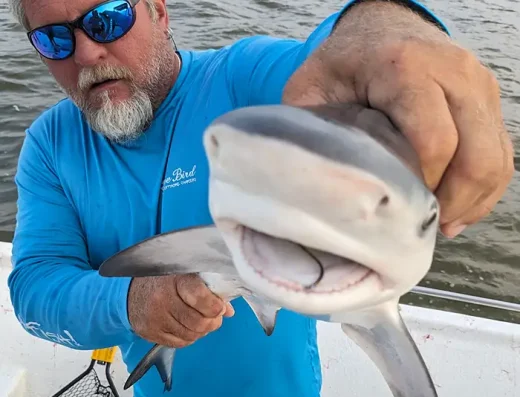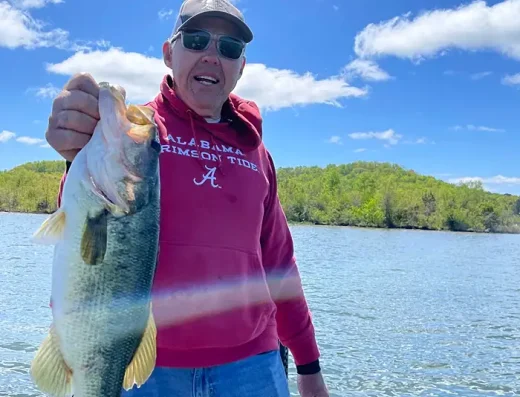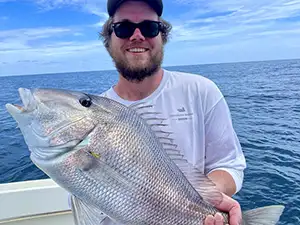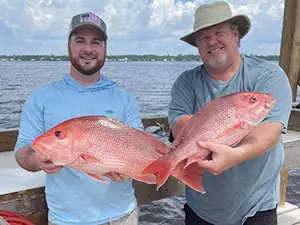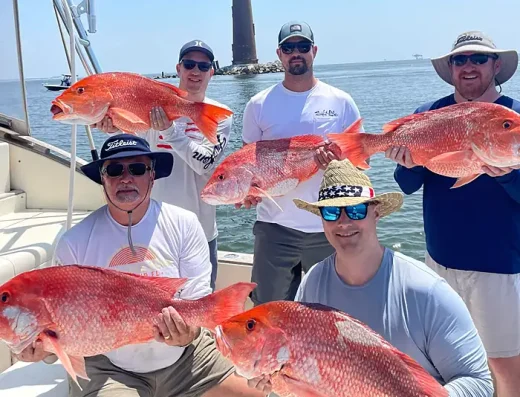Alabama Fishing Charters
Alabama fishing charters offer up everything from skinny water redfish in the Mobile Bay marshes to snapper runs off Gulf reefs and crappie slabs upstate.
TrustedFish connects anglers with proven local captains in Alabama —no commissions, no pay-to-play listings, no BS. Every charter on our platform is invite-only, vetted for skill, local knowledge, and reputation. If they’re listed, they’ve earned it.
Top Rated Charters in Alabama
Click to View Destinations
Alabama Fishing Guide
Alabama’s a small state with a wide range of fishing—salt, fresh, shallow, deep. Down south, the Gulf Coast draws most of the attention. Orange Beach and Dauphin Island are launch points for offshore trips chasing red snapper, amberjack, and tuna when they’re in. Boats run 10 to 40 miles depending on what you’re after and how hard the seas are rolling. Nearshore reefs start just a few miles out and hold good numbers of triggerfish and mingos. Most charters use cut squid, pogies, or live pinfish on two-drop rigs, circle hooks, 6–10 oz weights.
Mobile Bay and its estuaries offer the best inshore mix—reds, specks, flounder. Guides drift or pole flats, fish creek mouths, or bounce jigs around docks. Shrimp under a popping cork works fine, but many captains go artificial in clear water—paddle tails or topwaters depending on the time of day. Upstate, Alabama’s loaded with lakes. Guntersville, Eufaula, and Lay Lake are all known bass factories. Stripers and catfish show up in big numbers on the Tennessee River chain too. Most freshwater trips are half-day with early morning launches, light tackle, and a focus on seasonal structure—ledges, brush piles, or weed lines.
Whether you’re trolling for kings in the Gulf or working brush for spring crappie, Alabama gives you enough variety to fish year-round and never run the same game twice.
Regional Fishing Highlights
Gulf Shores & Orange Beach
This stretch is ground zero for offshore fishing in Alabama. Boats run out to artificial reefs, oil rigs, and shelf edges. Red snapper’s the big draw during season, but there’s solid action year-round with amberjack, king mackerel, and cobia. Nearshore trips target Spanish mackerel and bonito trolling just outside Perdido Pass. Inshore charters stick to Oyster Bay and the ICW, where you’ll find redfish, trout, and the occasional tripletail around markers and crab trap buoys.
Mobile Bay & Delta
Tidal marshes, river mouths, and old piers make this area prime for inshore action. The upper delta’s full of creeks holding redfish and flounder, while the mid-bay reefs hold trout through summer and fall. Live shrimp on Carolina rigs do well here. Guides adjust with the tides and water clarity—when it’s muddy, they’ll tight-line deeper. Nighttime dock light trips in summer are a hidden gem for specks.
North Alabama Lakes
Guntersville leads the way with consistent largemouth action—frog bite over grass mats is legendary by late spring. Wheeler, Wilson, and Pickwick are known for smallmouth and catfish too. Crappie fishing is strong on Weiss and Neely Henry, especially in the prespawn and fall months. Most lake guides use side-scan to locate schools and work tight-lining rigs or jigs over structure.
Dauphin Island
Fishing Seasons in Alabama
Spring
Summer
Fall
Winter
Most Popular Gamefish in Alabama
- Red Snapper – 5 to 20 lbs. Caught offshore during season (usually summer). Two-drop bottom rigs with squid or cut bait over reefs and wrecks.
- Redfish – 18 to 40 inches. Found year-round inshore—bayous, oyster reefs, and around docks. Best on shrimp, crab, or paddle tail jigs.
- Speckled Trout – 12 to 24 inches. Most active spring through fall. Drifting or casting live shrimp under corks or soft plastics near grass and current.
- Largemouth Bass – 2 to 8 lbs. Lake fishing, especially spring spawn. Frogs, jigs, and crankbaits near grass, docks, and offshore humps.
- Crappie – 10 to 16 inches. Tight-lined minnows or jigs over brush piles, creek mouths, and ledges on lakes like Weiss and Neely Henry.
- King Mackerel – 10 to 30 lbs. Trolled nearshore to mid-range on spoons or live bait rigs, especially summer through fall.
- Flathead Catfish – 10 to 50 lbs. Fished with live bait in slow-moving rivers and tailraces. Nighttime bite is best.
Alabama Fishing FAQs
What license do I need to fish in Alabama?
If you’re over 16, you’ll need a state fishing license—saltwater, freshwater, or both depending where you go. Most charter trips include it.

